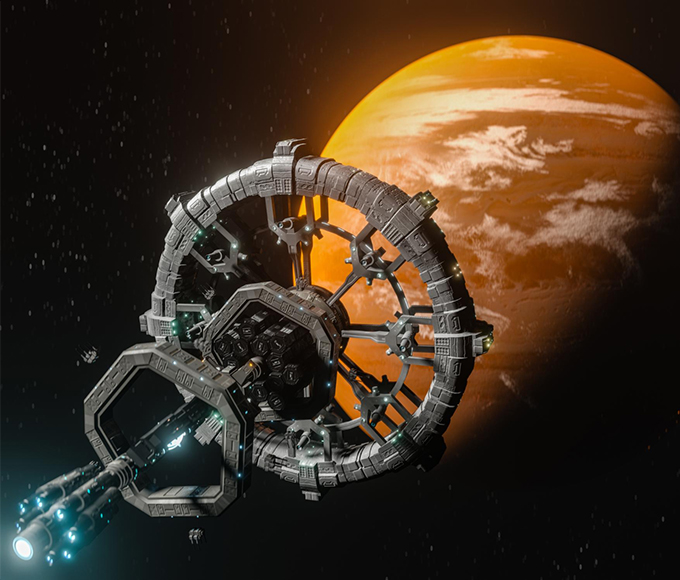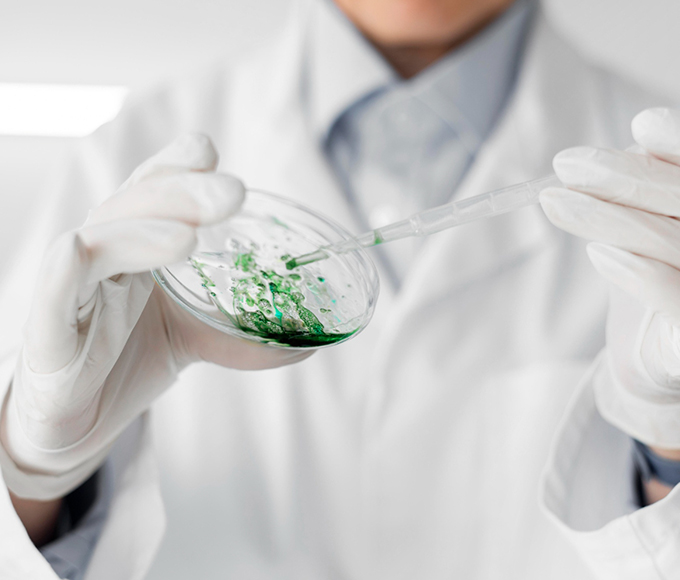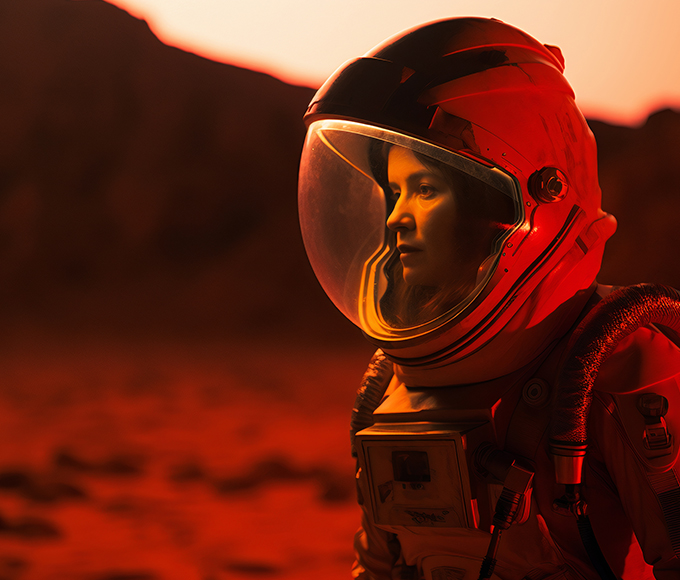NASA’s Mission to Cultivate Wolffia in Space

As humanity prepares for extended missions beyond Earth, ensuring sustainable life support systems becomes paramount. A critical component of these systems is the provision of reliable, nutritious, and efficient food sources that can thrive in extraterrestrial environments.
NASA’s Tiny Plant with Enormous Potential
Wolffia, commonly known as watermeal, has emerged as a promising candidate in this endeavor. Recognized as the world’s smallest flowering plant, Wolffia floats on the surfaces of calm freshwater bodies and is nearly invisible to the naked eye due to its minuscule size. Despite its diminutive stature, Wolffia boasts a remarkable nutritional profile, with protein content comparable to that of soybeans and rich in essential amino acids, vitamins, and minerals. Its rapid growth rate, with the ability to double its biomass in less than 48 hours under optimal conditions, makes it an attractive option for cultivation in space, where resources and space are limited. NASA’s interest in Wolffia is part of a broader initiative to develop bioregenerative life support systems—self-sustaining ecosystems that recycle waste and produce food and oxygen for astronauts. Traditional resupply missions are logistically complex and costly, especially as missions venture farther from Earth. Thus, the ability to cultivate food in situ is paramount. Wolffia’s compact size, high nutritional value, and minimal resource requirements align seamlessly with these objectives, positioning it as a potential cornerstone for sustaining human life during long-duration space missions.

The Nutrient-Rich Aquatic Marvel
Wolffia, belonging to the family Araceae, encompasses several species of free-floating aquatic plants. Each frond is less than one millimeter in diameter, making these plants some of the smallest vascular plants known. Despite their tiny size, Wolffia species are nutritional powerhouses. Studies have shown that the protein content of Wolffia ranges between 20% and 30% of its dry weight, comparable to traditional protein sources like soybeans. This protein includes all essential amino acids necessary for human health. In addition to protein, Wolffia is rich in vitamins and minerals. It contains significant levels of vitamin A, several B vitamins, vitamin C, and essential minerals such as potassium and iron, while being low in sodium. The plant also provides beneficial trace elements like manganese, zinc, and copper. Its rapid growth rate is another notable feature; under optimal conditions, Wolffia can double its biomass in less than two days, making it a highly efficient crop for continuous cultivation. This rapid proliferation, combined with its dense nutrient profile, has led to its traditional use as a food source in various cultures, particularly in parts of Asia. In regions like Thailand, Wolffia, known locally as “Khai-nam,” has been consumed for generations, highlighting its safety and nutritional value as a dietary component.
NASA’s Pioneering Research on Wolffia for Space Missions
NASA’s exploration of sustainable food sources for long-duration space missions has led to an interest in Wolffia due to its unique characteristics. The plant’s minimal space requirements, rapid growth, and high nutritional value make it an ideal candidate for cultivation in the confined environments of spacecraft and extraterrestrial habitats. One significant initiative is the Lunar Effects on Agricultural Flora (LEAF) project, slated for the Artemis III mission. This project aims to study the growth of plants, including Wolffia, under lunar conditions to assess their viability as food sources on the Moon and beyond. The LEAF experiment will provide critical data on how lunar gravity and radiation affect plant development, informing strategies for sustainable extraterrestrial agriculture. Additionally, prior studies have subjected Wolffia to various gravitational conditions to evaluate its resilience. These experiments have demonstrated that Wolffia can withstand and adapt to altered gravity environments, maintaining robust growth rates. This adaptability is crucial for plants intended to support life in the variable and challenging conditions of space habitats. NASA’s research into Wolffia cultivation is part of a broader effort to develop bioregenerative life support systems that utilize plants for food production, oxygen generation, and water purification, thereby enhancing the sustainability of human space exploration.
Wolffia’s Role in Advancing Human Space Exploration
The integration of Wolffia into space missions offers several advantages that could significantly enhance the sustainability and success of long-duration extraterrestrial endeavors. Firstly, as a highly nutritious food source, Wolffia provides a rich supply of protein and essential nutrients, which are vital for maintaining astronaut health during extended missions. Its rapid growth rate ensures a continuous and reliable food supply, reducing dependence on Earth-based resupply missions. Secondly, Wolffia contributes to life support systems beyond nutrition. Through photosynthesis, it aids in oxygen production, replenishing the air supply within spacecraft and habitats. Additionally, its cultivation in hydroponic systems can assist in water purification, as the plant absorbs nutrients and contaminants from the water, thereby improving water quality for reuse. These functions are integral to creating a self-sustaining environment necessary for long-term human presence in space. Moreover, the psychological benefits of cultivating and consuming fresh food cannot be overlooked. Engaging in plant cultivation can provide astronauts with a sense of purpose and a connection to Earth, alleviating feelings of isolation and confinement. The presence of greenery has been shown to reduce stress and improve overall well-being, contributing to better mental health during extended missions. In summary, Wolffia’s multifaceted benefits make it a valuable asset in advancing human space exploration.

Experience the Wolffia Difference Today!
Elevate your nutrition and join the sustainable food revolution with our premium dried Wolffia. Packed with protein, vitamins, and minerals, it’s the perfect addition to your healthy lifestyle. Easy to use and versatile, Wolffia effortlessly integrates into your favorite recipes.
Conclusion
In conclusion, Wolffia’s unique combination of rapid growth, high nutritional value, and minimal resource requirements positions it as a promising candidate for space-based agriculture. NASA’s research into cultivating Wolffia in extraterrestrial environments aims to develop sustainable life support systems that can support human life during long-duration missions. The successful integration of Wolffia into these systems could revolutionize space nutrition, reduce reliance on Earth-based supplies, and enhance the overall feasibility of deep space exploration. As we venture further into the cosmos, innovative solutions like the cultivation of Wolffia will be essential in overcoming the challenges of sustaining human life beyond our planet.
References
1. Appenroth, K.-J., Sree, K. S., & Böhm, V. (2018). Nutritional Value of the Duckweed Species of the Genus Wolffia (Lemnaceae) as Human Food. Frontiers in Chemistry, 6, 483. https://doi.org/10.3389/fchem.2018.00483
2.Space Lab. (2024, April 2). Lunar Payload LEAF – Lunar Effects on Agricultural Flora. Space Lab. https://www.spacelabtech.com/lunar-payload-leaf—lunar-effects-on-agricultural-flora.html
3.Wall, M. (2024, March 27). Artemis astronauts will carry plants to the moon in 2026. Space.com. https://www.space.com/nasa-artemis-3-plant-growth-experiment-moon
4.Purdue University. (2024, September 15). Purdue and NASA scientists plant the seeds for lunar agriculture. Purdue University News. https://ag.purdue.edu/news/2024/09/purdue-and-nasa-scientists-plant-the-seeds-for-lunar-agriculture.html







